Is D for Design or Deception?
In April 2015, FastCoDesign.com published an article by John Brownlee titled “The Golden Ratio: Design’s Biggest Myth – The Golden Ratio is Total Nonsense in Design. Here’s Why.” (Find article here.)
The article, unfortunately, is filled with bias and errors, but immediately ranked on the top page of Google results for searches on “Golden Ratio.” Why? Because Google places a high value on the assumed credibility of a site. Fastcodesign ranks #2,295 of all US sites on Alexa while GoldenNumber.net ranks #93,094. Unfortunately, “credibility” is not always the same as reliability, accuracy and truthfulness.
Here is my review of the many inaccuracies in the article.
Start with an upside-down Golden Spiral on the Parthenon
First, the top of the article shows the Parthenon with the caption “Is the Parthenon designed after the Golden Ratio? NOPE!”
As proof, we’re shown a golden spiral that is drawn upside-down. It’s also oversized, as shown by the red lines added to illustrate the projected roof line. So Brownlee’s article is off to a start that is uninformed at best, and deceptive at worst.
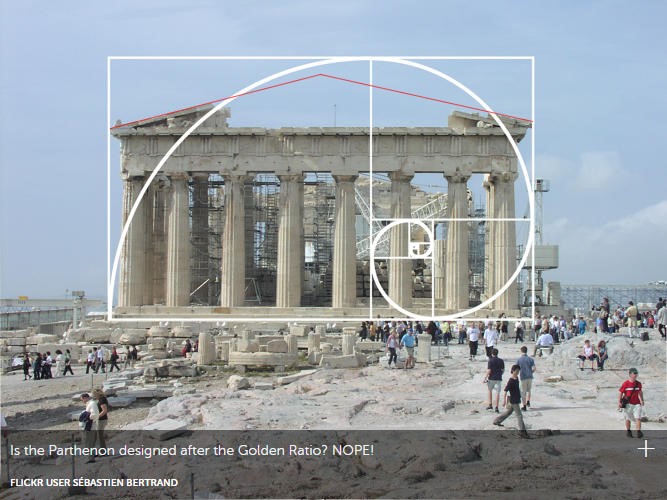
The typical ways to illustrate this particular golden ratio proportion often said to exist in the Parthenon are shown below. It reveals the rough golden ratio dimensions of the roof beam atop the columns in relation to the Parthenon’s total height. Click here for a more detailed analysis of the golden ratios in the Parthenon, which are not as often claimed.
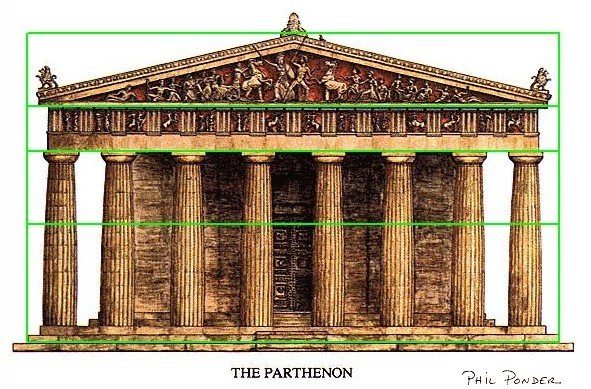
The Golden Ratio is used by great designers, but not all designers, so therefore it’s BS?
Brownlee states the golden ratio is “BS,” but begins the article acknowledging that “greats like Le Corbusier and Salvador Dali have used the number in their work.” Here’s another clue that something is amiss.
He says that “many designers don’t use it.” That’s true, but then many designers do use it. This is clear from all the literature on it. I know it on a personal level because I developed the PhiMatrix golden ratio design software that gets rave reviews and is used by thousands of artists, architects, designers and photographers in over seventy countries.
Try saying there’s no science or evidence for it
He says there’s “no science to back it up.” That’s not true, so Brownlee is either unaware of it or is simply choosing to ignore it. While there are conflicting studies and viewpoints, there is research that correlates the golden ratio to perceptions of beauty, including the extensive work of Dr. Stephen Marquardt, inventor of the patented, golden ratio-based “Marquardt Beauty Mask.” The patent itself demonstrates that the U.S. government found Dr. Marquardt’s application of the golden ratio to beauty to be accurate, legitimate and worthy of intellectual property protection. Then there’s the frequently cited 2009 university study on facial attractiveness, which gave evidence to the golden ratio’s role in attractiveness even though the researchers didn’t realize it or understand how to measure it. Click on the images below.
- Facial golden ratios, vertical and horizontal
There’s also the facial beauty analysis that I’ve done independently. Even those who seek to debunk the golden ratio acknowledge its unique properties in math and geometry and its frequent appearances in nature. These qualities make the golden ratio unique as a tool for design.
Interview someone who shares your bias and who also has only limited knowledge about design
Brownlee’s primary source for this article – which is on DESIGN – is Professor Keith Devlin, a mathematician. Devlin holds a rather narrow academic viewpoint and claims that “no evidence exists” at all for the golden ratio outside of mathematics and a few areas such as the Fibonacci spirals of plants or impact in fractals. It seems that he refuses to even acknowledge any evidence presented on a variety of other topics related to the golden ratio, including many for which detailed analysis and illustrations are presented on this site. To illustrate, watch his video on Debunking 10 Golden Ratio Myths (find video here) and then read my article on Golden Ratio Myth, Fact and Misunderstanding and come to your own conclusions. Devlin is very oriented to the theoretical, saying “Strictly speaking, it’s impossible for anything in the real-world to fall into the golden ratio, because it’s an irrational number.” Is such a theoretical, pedantic viewpoint relevant to those who happen to live in the real world, especially artists, designers and others who see and appreciate practical applications for the golden ratio?
Make up your own revisionist history
Brownlee quotes Devlin saying that Luca Pacioli, author of The Divine Proportion in 1509, “didn’t argue for a golden ratio-based theory of aesthetics as it should be applied to art, architecture, and design.” As support, he references a misquote in a book by two French mathematicians in 1799. That misquote, however, stated that Pacioli insisted upon the Golden Ratio for determining the proportions of ALL works of art. On page 132-133 of the book that Devlin used as his source, author Dr. Mario Livio writes “Pacioli raves ceaselessly about the properties of the Golden Ratio” and “there is no doubt that Pacioli had a great interest in the arts and that his intention in The Divine Proportion was partly to perfect their mathematical basis.” He continues, “His opening statement on the book’s first page expresses his desire to reveal to artists, through the Golden Ratio, the “secret” of harmonic forms.” So to say that Pacioli’s endorsement of the Golden Ratio in the arts is simply a misquote is a complete falsehood. To the contrary, the first volume of the three in Pacioli’s book was dedicated entirely to it. The second volume was dedicated to the Roman Vitruvian system. Dr. Livio states that Pacioli specifically endorsed this simpler integer-based, system when dealing with design and architecture, but that does not diminish his passion for the Golden Ratio in the arts. In fact, the one single architectural illustration that appears in the book shows Golden Ratios in its design, as shown below:
Brownlee goes on to imply that da Vinci’s use of the Golden Ratio in creating his “exquisitely beautiful paintings” is also a misquote, but the evidence of its use is quite clear in The Last Supper, The Annunciation and Salvator Mundi.
He then quotes Devlin’s reference to Adolf Zeising, casting Zeising as the one and only other person responsible for the Golden Ratio’s place in history and the arts. In doing so he ignores Johanne Kepler’s reference to it as one of the “two great treasures of geometry” and its use by da Vinci, Botticelli, Michelangelo, Raphael, Seurat, Le Corbusier, Dali, Penrose and countless others.
Ask irrelevant questions and try to draw meaningful conclusions
The “favorite rectangle” study referenced in the Brownlee article has questionable relevance for assessing the value of the golden ratio in design. Why? Because it’s taken out of context to the things that are normally associated with beauty. People have favorite songs, colors, foods, etc, but do you know anyone who has a favorite rectangle? Is there ever a favorite of anything upon which ALL people agree? Even so, the study showed that consumers prefer rectangles in the range of 1.414 (root 2) to 1.732 (root 3). The midpoint of that is 1.573, a barely visible 2.8% variance from the golden ratio at 1.618. This is hardly a conclusive proof against it.
The article says the link between the golden ratio and beauty is a canard (unfounded rumor or story) of the world of art, architecture, and design. Even Brownlee describe’s da Vinci’s paintings as “exquisitely beautiful,” but has he ever investigated the ratios within them to understand why? If you want evidence, just see the detailed analysis and many illustrations in our articles on Life and Nature, Beauty and Design, or click on an image below.
- Animation of common golden ratios
- Facial golden ratios, vertical and horizontal
- UN Secretariat Building dividing lines based on golden ratios
- The Last Supper by Leonardo da Vinci
- Last Supper detail showing golden ratios
- The Creation of Adam by Michelangelo
- Seurat painting with golden ratios at horizon, pier and sail
Ignore what your own expert witnesses say about it
Brownlee interviewed a handful of recognized designers in his attempt to prove that the golden ratio is “BS,” but yet we find this among their comments:
“The golden ratio is as important to designers as any other compositional rule.”
“It is used to observe proportions in products and graphics as and informational and important tool, but not a rule.”
“It’s one of many tools, and does turn up in a wide variety of places.”
These seem like reasonable observations by design professionals on the golden ratio’s value and legitimacy as a design tool, do they not?
So where’s the BS then? Is it the golden ratio … or is it Brownlee’s article? In my opinion, the article does a great disservice to its readers. It’s inaccurate, sensationalist and polarizing. It’s truly unfortunate that a site with the reputation of FastCoDesign would accept this as journalism.
Design, and journalism, are both better with good tools and guides
Here are some comments already posted to Brownlee’s article, corroborating that it’s his article that is total nonsense, and not the golden ratio:
“The golden ratio is to design as “fair and balanced” is to writing; it’s a guideline that helps make the outcome pleasing. Of course, these guidelines can be ignored (and often are) at your own peril.”
“Silly, snarky piece. … The cherry-picked testimonials to the golden section’s irrelevance are laughable.”
“This article is silly, and interviewing mathematicians about the “formula to beauty” is ridiculous.”
“This is why peer editing is still a good idea. The author should have found an actual educated person and said “does this article make me look and sound like a complete dips#!t?”…. To which the properly educated person would have said “why yes, of course!”
“Shouldn’t Devlin have written this article? Brownlee was basically his ghostwriter quoting him at every turn to espouse some bitter math professor’s long time frustrations with creatives.”
“This article is misleading and utter nonsense. The author clearly has no idea what he’s talking about. His boldness can’t hide a profound ignorance about design and creative processes. There´s no “myths” in Design… there´s just tools and methodologies that some of us may or may not use depending on the specifications of a project. As someone else pointed out, this article is just a cry for attention from someone beating a dead horse thinking it´s a sacred cow. FastCo might get “views” and “likes” out of articles like this but you’re not going to recover the trust of many of us… as we say in Spain “pan para hoy, hambre para mañana” (bread for today, hunger for tomorrow). Appalling stuff.”
“This is a bit “sensationalist” way of saying designers don’t use the Golden Mean. Of course you don’t. At some point your eye has learned the kind of ratios, proportions and relationships that work. It’s both false and lazy to not research and discuss design work that does lean heavily on classical ratios. It’s also a little preposterous to exclaim only 2 people every said the this ratio was meaningful and then only present 2-3 people who say it isn’t meaningful. … The fact that your journalism is sort of s#!t, or that your ability to form a reasonable argument is questionable is a disappointment and a disservice to your readers.”
“The attitude of this article is so puerile.”
“Is this argument like saying we can never draw a circle – a circle doesn’t exist because pi is irrational…or the diagonal of a square can’t exist because square root 2 is irrational ? .. your argument is irrational and ill thought out … total BS”
“I imagine the reason for the headline is to be provocative but I’m guessing that Mr. Brownlee has never put pen to paper other than to write something for if he’d tried his hand at design he’d have found the golden ratio and other such ratios to be endlessly inspiring. I’ve used them in my buildings for as long as I can remember and the results, I hope, speak for themselves. See www.avery-architects.co.uk However, if you are really interested in the subject do read my article in the Architectural Review dated 1992 (which is on the website under ‘News’ – ‘2013 January’ – ‘New book’ – Wilderness City’ – Look inside the book’ pp 95-102). It sets out another basis for the golden ratio – that it’s in the structure of the eye and therefore Beauty really is in the Eye of the Beholder. Bryan Avery”
Choose evidence over opinions to find the truth.
There are indeed false claims about the golden ratio that unfortunately lead to confusion about it. Unfortunately, articles like Brownlee’s only perpetuate the problem. The fallacy largely comes in making extreme, polarizing statements and then using them as your straw man to tear apart. As Wikipedia notes, “A straw man is a common form of argument and is an informal fallacy based on false representation of an opponent’s argument. To be successful, a straw man argument requires that the audience be ignorant or uninformed of the original argument.”
Is the golden ratio a universal law or formula that exclusively defines all that is beautiful? No. Is it unique in mathematics and geometry, often found in nature, used by many in the design arts and useful as a tool in understanding and creating beauty and harmony in proportion? Yes. See my article on Golden Ratio Myth, Fact and Misunderstanding for a much more objective and better documented presentation on this topic.
UPDATE: After this article was written, FastCo Design deleted all 300 user comments from the Brownlee article. The first new comment was written by recognized design expert Darren Crescenzi, who wrote a 6 page counter-response titled “Why the Golden Ratio matters. In defense of using visual harmonies in Design.” See details on my page at “Another FastOne by FastCoDesign on the Golden Ratio?.”
So what do you think? Is the golden ratio the myth or the math of design? Add your comments to this article below.

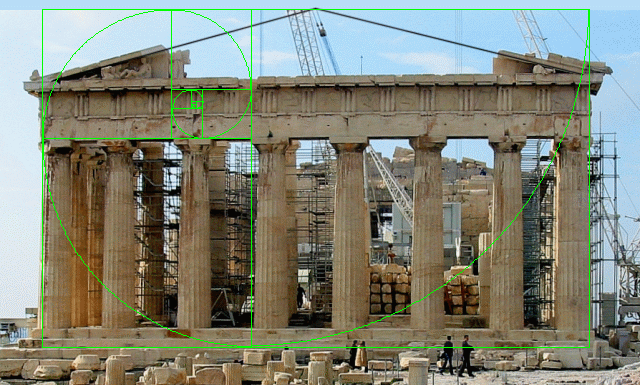
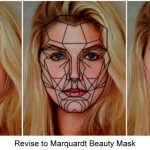
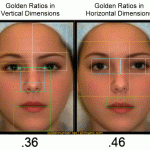
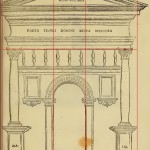
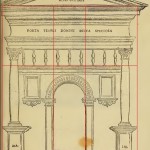
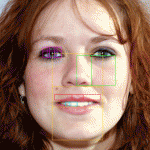



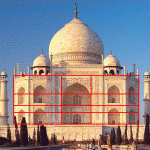
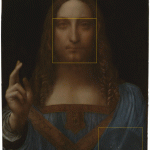
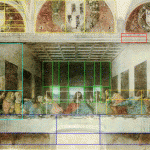
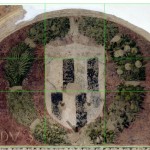


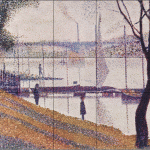
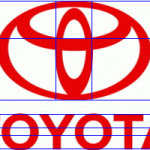




FastCo Design publishes some good material but much of it treads a fine line between skepticism and cynicism. The golden ratio article is a great example of that. Designers can be insecure about their methods and FastCo loves to shout, “throw away everything you know, because The Future is coming!” And in doing so, the implication is that if you are holding on to outdated beliefs, you’re an idiot, and not fit to be a member of Digital Culture. So thanks for providing a counterpoint to that cynical attitude.
Let’s take a look what Wikipedia says about …
Cynicism … is an attitude or state of mind characterized by a general distrust of others’ motives believing that humans are selfish by nature …
Psychological projection … According to some research, the projection of one’s negative qualities onto others is a common process in everyday life …
Pseudoskepticism (or pseudoscepticism) is a term referring to a philosophical or scientific position which appears to be that of skepticism or scientific skepticism but which in reality fails to be so … The tendency to discredit rather than investigate … Making unsubstantiated counter-claims …
and so on. We know that this kind of very bad journalism is a byproduct of the Internet (or Digital Culture).
There doesn’t appear to be any evidence in Brownlee’s article to support his proposition that the golden ratio is BS. Brownlee’s research illustrates a shallow understanding of the subject, and like you, my first thought when reading it was that it was a straw man argument. If Brownlee had spent years studying this topic, he would have discovered a number of useful methods for applying the golden ratio and its related ratios to design.
Brownlee even mentions a study from the Haas School of Business at Berkeley in support of his arguments, and quotes the ratios 1.414… (The square root of 2) and 1.732… (The square root of 3); both of which are irrational numbers. If the author had dug a little deeper, he would have discovered the relationship that these ratios have with the golden ratio and their usefulness to design.
We are brought up to use linear measurement systems (metres and millimetres, feet and inches, etc) and this is how most people measure the world around them. For many people, being able to grasp a proportional system of measure is a paradigm shift to far. Surprisingly, the easiest way to put irrational numbers to good use, is to ignore the mathematics behind them altogether. With a couple of sticks, a bed of sand and a piece of string (or a compass and straight edge), these ratios are easy to generate and are relatively easy to embed into a design.
Brownlee’s quote “The golden ratio is always going to be a little off” is complete nonsense. The golden ratio is an irrational number. It’s never going to be off. It’s as perfect as Pi. It would be more valid to say that because there is variability in natural systems (thanks to working with whole numbers and constantly changing environmental factors), you will never find the perfect golden ratio in Nature, not even in a Nautilus shell; nor in any man-made design.
The lack of perfection that arises from natural variability is not a valid argument for dismissing the golden ratio’s usefulness. Nature works with whole numbers of cells, hence the Fibonacci sequence is often a better fit to what we see in the natural world. Relative to other shells, the Nautilus shell just happens to exhibit a spiral that varies little from the golden spiral; but vary it does, and no two Nautilus shells are identical. Likewise, you can’t use a compass to create a perfect circle. Any slight wobble in the compass, or change in pressure is going to introduce variation to the curve. This subtle variation may be imperceptible to the human eye, but it is there nonetheless. This lack of perfection will never stop us from putting subtly imperfect round wheels on our cars.
“Hidden harmonies are more than obvious.”
Heraclitus
TED would demur on this FastCo polemic (and on WIRED et al’s recent articles too).
But really, looking exclusively at only Spatial interpretations are so last century anyway.
And does that also mean the entire repertoire of plant phyllotaxis is an illusion?
Plants are telling us something, that we need to think harder about the Temporal, thermodynamics and morphogenesis, as Alan Turning did in his last research on the Fibonacci series, phyllotaxis and morphogenesis before he tragically died at an early age.
We need to look at both the animate and inanimate, at the dynamical and space-time, not just the frozen and static. It seems the way nature works is to manifest the golden ratio not as a spatial fossil, rather an optimal temporal energy flow signature. An efficiency (& beauty) constant.
All this current argument is only over the residue or sedimentary forms of these dynamical flows – so we are missing half the picture (as I’ve been saying since first publication in AD Magazine).
https://asynsis.wordpress.com/2014/09/05/entropy-begets-design-qed-2/
What the sciences of complexity and dynamical systems have been sharing recently is that the golden ratio is one of several optimal, analogical geometric signatures of how nature evolves emergent complexity most easily – over time.
It’s a dynamical behaviour, a verb not a noun.
It’s not the phone number, but the action of dialing.
Here’s how I Tweet it:
#Asynsis #DaoOfDesign on #TED at #TEDxWanchai #HongKong.
A New, Extremely Lean, Mean (#Design) #TheoryOfEverything
http://tedxtalks.ted.com/video/Form-follows-flow-%7C-Nigel-Readi;search%3ANigel%20Reading
http://asynsis.styleonedigital.com/archives/4017
http://about.me/asynsis
The very latest examples (including E8 & ER=EPR #Universality), are shared here (enjoy!):
https://www.facebook.com/pages/AsynSo%CF%86ia/202383966558282
As a manifestation of dynamical systems Universality and the Constructal law of design in nature and culture,
the golden ratio is actually a key, optimal, analogical geometric signature of a new design theory of everything.
https://medium.com/@ASYNSIS/asynsis-an-extremely-mean-theory-of-everything-fbb95d5f53d8
http://www.scoop.it/t/asynsis-principle-constructal-law
http://about.me/asynsis
Wonderful article…thank you. John Brownlee did a very poor job conducting research on the Golden Ratio, so thank you for correcting his misinformation. Brownlee’s article in Fast Company does a discredit to the power of the Golden Ratio and a disservice to artists, designers, and architects who are interested in such matters. For us dowsers and scientists, we know how to measure the “divine” energy that emanates from the Golden Ratio, both qualitatively and quantitatively, and it certainly does attract people, even from our own studies using hidden symbols behind two identical advertisements, for example.
Again, thank you for your brilliant piece.
I often wonder why those who discredit the golden ratio are so motivated. If you don’t see it, ok, but why the need to publish poorly researched articles with such energetic waste. People are often difficult to trust, but the world around us tells us that certain proportions are favored in this experience we are all sharing.
After reading this article and a couple other about the Golde Ratio, I think it would be hard for anyone to say that the Golden Ratio isn’t researched or provable because it obviously has been researched and proved. There have been a bunch of tests and study’s done specifically about how the Golden Ratio applies to beauty and how it’s been used in art and design. It is good that arguments for both sides of the argument on whether the golden ratio being used in design is a myth or not. However, I think it’s nearly impossible to argue against something that has been proven multiple times.
I know the conception of golden number, but I think it is not this case. Parthenon is more complicated building that build not our civilization
There are indeed false claims about the golden ratio that unfortunately lead to confusion about it.